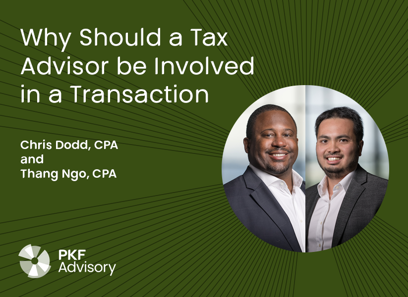Protect yourself from Deepfake Social Engineering Attacks in online interactions.
Protect yourself from Deepfake Social Engineering Attacks in online interactions.
Blog Article
Future-Proof Your Organization: Trick Cybersecurity Forecasts You Required to Know
As organizations confront the accelerating rate of digital change, comprehending the progressing landscape of cybersecurity is vital for long-lasting durability. Predictions suggest a significant uptick in AI-driven cyber risks, together with heightened regulatory scrutiny and the vital shift towards Zero Trust fund Style. To properly browse these difficulties, organizations must reassess their security approaches and promote a society of understanding among employees. The implications of these adjustments prolong past plain compliance; they can redefine the extremely framework of your functional safety. What steps should firms take to not only adjust but thrive in this brand-new environment?
Rise of AI-Driven Cyber Dangers

One of the most worrying growths is making use of AI in creating deepfakes and phishing plans that are extremely persuading. Cybercriminals can fabricate audio and video content, impersonating executives or relied on people, to adjust targets right into disclosing delicate information or licensing illegal purchases. In addition, AI-driven malware can adjust in real-time to escape discovery by typical safety and security steps.
Organizations have to recognize the urgent need to bolster their cybersecurity frameworks to combat these evolving threats. This consists of investing in advanced hazard discovery systems, cultivating a society of cybersecurity understanding, and carrying out robust incident response strategies. As the landscape of cyber hazards changes, positive procedures end up being vital for protecting sensitive information and maintaining business honesty in a significantly electronic world.
Raised Emphasis on Information Personal Privacy
Exactly how can organizations efficiently browse the expanding emphasis on data personal privacy in today's electronic landscape? As regulative frameworks evolve and customer assumptions rise, organizations need to prioritize durable information privacy techniques. This entails embracing extensive information governance plans that make sure the ethical handling of personal details. Organizations ought to perform routine audits to assess conformity with policies such as GDPR and CCPA, recognizing potential susceptabilities that might result in information breaches.
Spending in staff member training is important, as personnel recognition straight influences information defense. In addition, leveraging technology to enhance data safety is necessary.
Cooperation with lawful and IT groups is vital to straighten information personal privacy campaigns with organization purposes. Organizations needs to additionally involve with stakeholders, consisting of clients, to interact their commitment to information personal privacy transparently. By proactively resolving information privacy issues, companies can build trust and enhance their credibility, eventually adding to long-term success in an increasingly looked at electronic atmosphere.
The Shift to Zero Count On Design
In reaction to the developing risk landscape, organizations are significantly embracing Zero Trust Style (ZTA) as a basic cybersecurity approach. This technique is asserted on the concept of "never ever count on, constantly confirm," which mandates continuous verification of customer identifications, devices, and information, despite their location within or outside the network border.
Transitioning to ZTA includes implementing identification and gain access to monitoring (IAM) remedies, micro-segmentation, and least-privilege gain access to controls. By granularly controlling accessibility to resources, companies can mitigate the danger of expert risks and decrease the impact of external breaches. ZTA incorporates robust surveillance and analytics capabilities, enabling organizations to discover and react to anomalies in real-time.

The change to ZTA is additionally sustained by the raising fostering of cloud services and remote work, which have actually increased the assault surface (cybersecurity and privacy advisory). Typical perimeter-based security versions want in this new landscape, making ZTA a more resistant and flexible framework
As cyber hazards remain to expand in class, the adoption of Absolutely no Depend on principles will certainly be important for organizations looking for to secure their assets and maintain governing compliance while ensuring these details organization continuity in an uncertain atmosphere.
Regulatory Adjustments imminent

Future policies are anticipated to address a variety of concerns, including data personal privacy, violation notification, and occurrence feedback procedures. The General Information Defense Policy (GDPR) in Europe has actually established a criterion, and similar frameworks are arising in various other areas, such as the United States with the suggested government personal privacy laws. These guidelines usually impose stringent charges for non-compliance, stressing the demand for organizations to prioritize their cybersecurity measures.
Furthermore, markets such as financing, health care, and crucial infrastructure are most likely to deal with extra rigid requirements, showing the sensitive nature of the data they handle. Compliance will not simply be a legal responsibility however a critical component of building trust with customers and stakeholders. Organizations must stay ahead of these changes, integrating regulative requirements into their cybersecurity strategies to ensure resilience and protect their properties effectively.
Relevance of Cybersecurity Training
Why is cybersecurity training a vital component of a company's protection method? In an age where cyber dangers are progressively advanced, companies must acknowledge that their workers are often the first line of protection. Reliable cybersecurity training furnishes staff with the expertise to determine possible risks, such as phishing strikes, malware, and social engineering tactics.
By promoting a society of safety understanding, organizations can dramatically decrease the threat of human error, which is a leading reason for information breaches. Normal training sessions ensure that workers remain informed concerning the most recent hazards and best methods, therefore enhancing their capability to react appropriately to incidents.
Additionally, cybersecurity training advertises compliance with regulative needs, reducing the danger of lawful effects and punitive damages. It additionally see this website empowers workers to take possession of their duty in the company's safety and security structure, bring about an aggressive instead of reactive method to cybersecurity.
Conclusion
In verdict, the advancing landscape of cybersecurity needs proactive measures to resolve emerging threats. The surge of AI-driven assaults, coupled with heightened information privacy issues and the transition to Absolutely no Depend on Architecture, necessitates a comprehensive strategy to safety.
Report this page